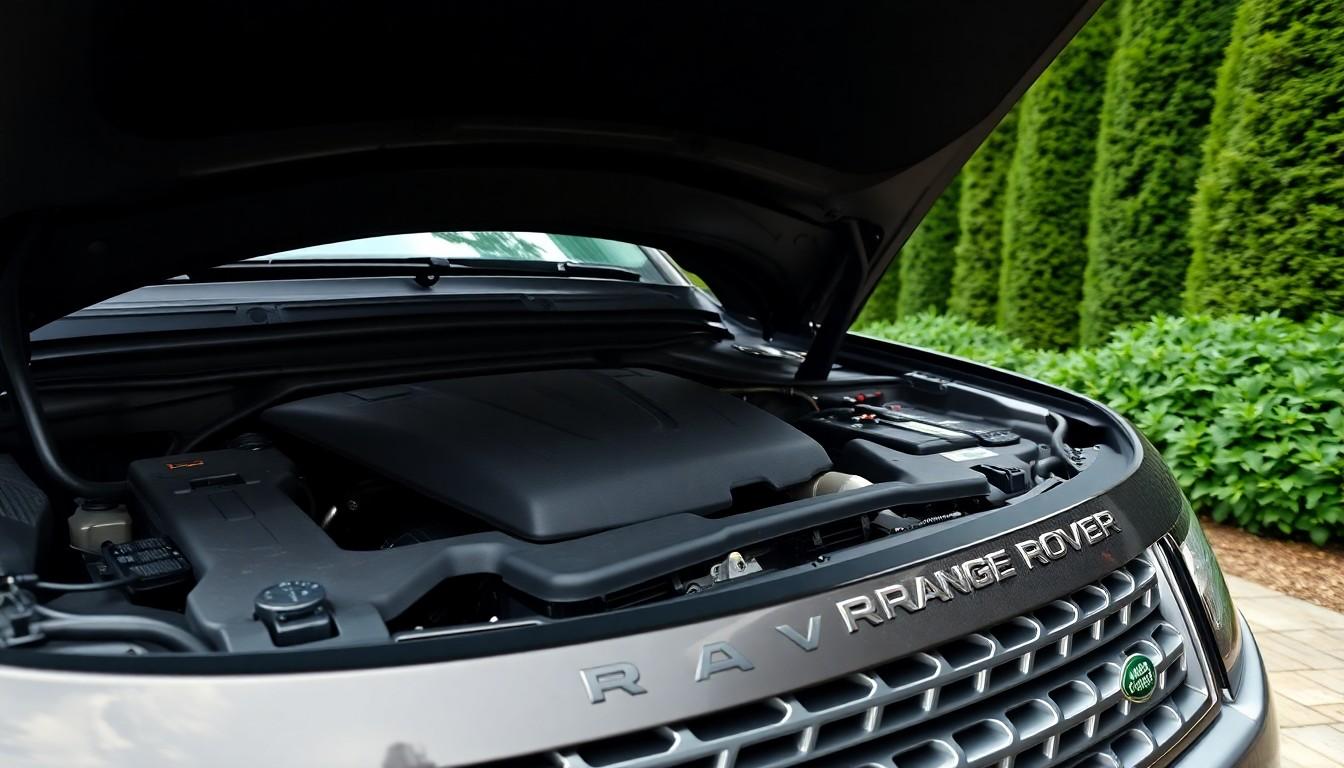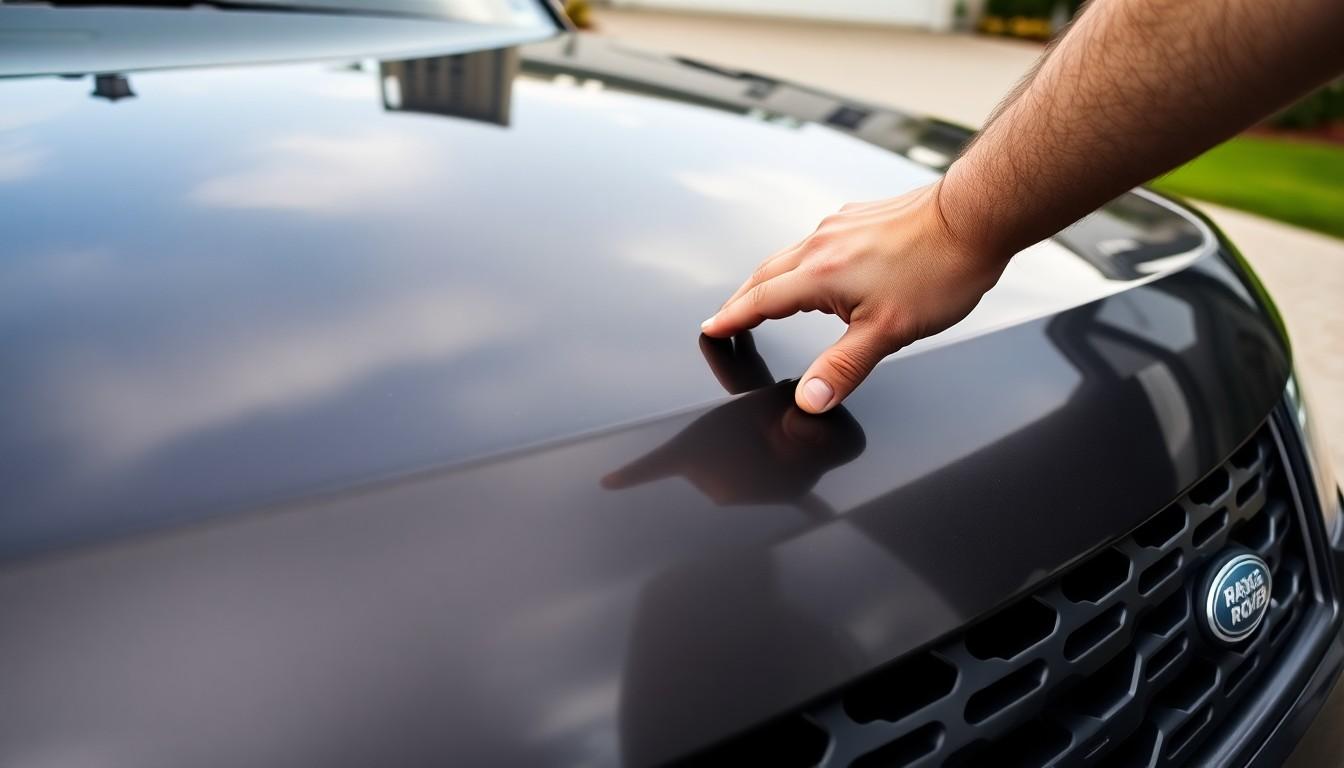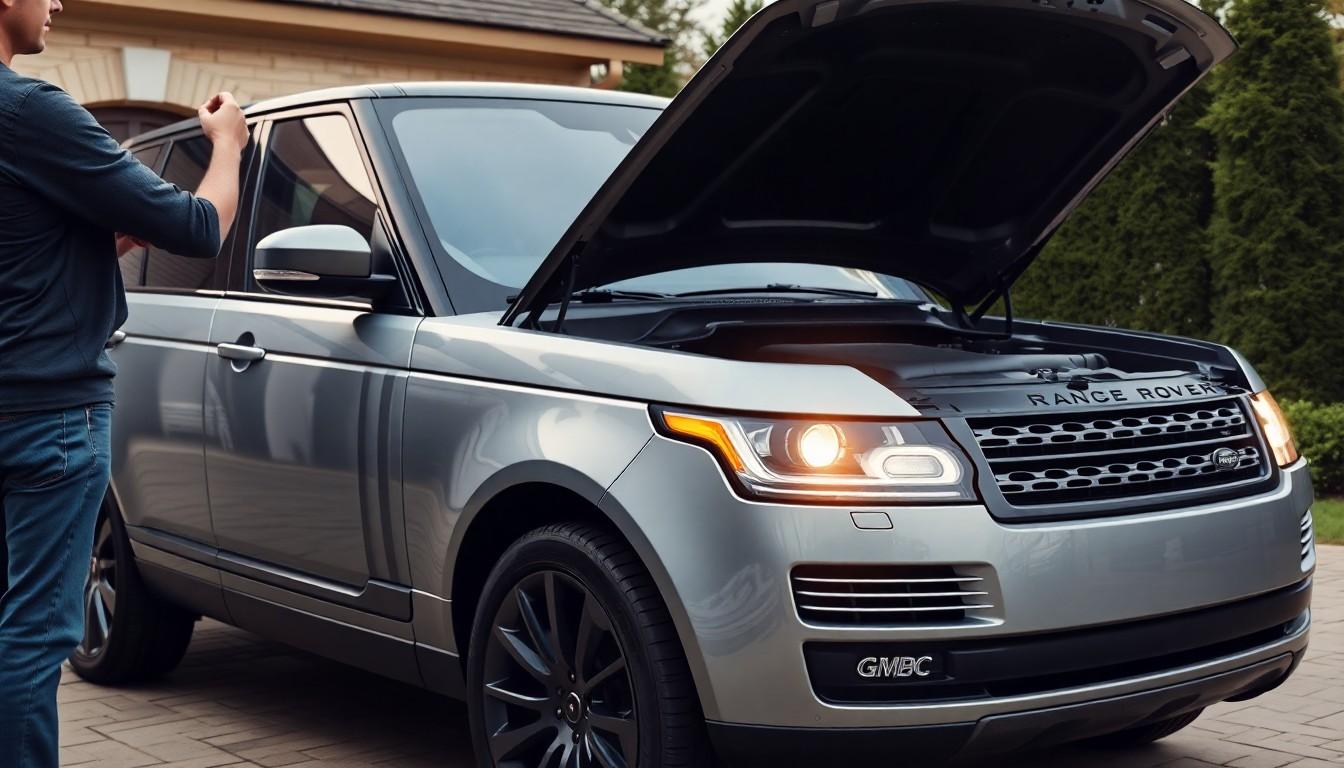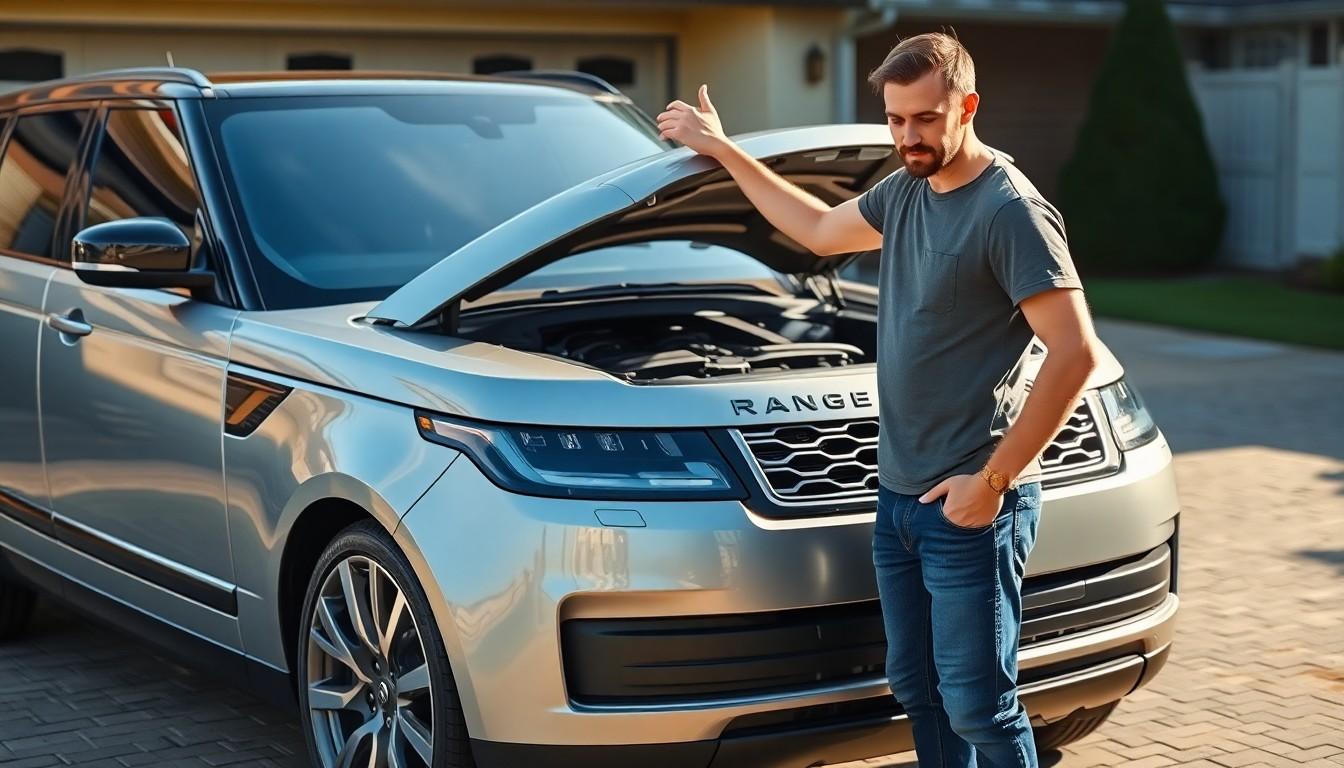Opening the hood of your Range Rover might seem like a straightforward task, but if you’re unfamiliar with this luxury vehicle’s design, it can be surprisingly challenging. We’ve created this comprehensive guide to help you access your Range Rover’s engine compartment quickly and safely, without the frustration of fumbling around looking for the release mechanism.
Whether you need to check fluid levels, jumpstart your battery, or perform routine maintenance, knowing how to properly open your Range Rover’s hood is an essential skill for any owner. In the following sections, we’ll walk you through the step-by-step process that works across various Range Rover models, including the Sport, Evoque, and Velar. With our expert guidance, you’ll be accessing your engine bay like a pro in no time.
Range Rover Hood Opening: A Complete Guide
Opening the hood of your Range Rover might seem challenging at first, but it’s actually a straightforward process once you understand the exact mechanism. Range Rover vehicles feature a two-step hood release system for enhanced safety. The primary release handle is located inside the vehicle, while the secondary latch is positioned under the hood itself.
Most Range Rover models follow a similar hood-opening procedure, though slight variations exist between different generations and variants. Newer models like the Range Rover Sport, Evoque, and Velar typically have the interior release lever positioned on the driver’s side footwell. Older Range Rover models may have slightly different release mechanisms, but the general principles remain consistent.
Safety is paramount when accessing your engine compartment. Always ensure your vehicle is parked on level ground with the engine turned off and cooled down before attempting to open the hood. The hood itself is quite heavy in most Range Rover models, so be prepared to support its weight as you release the secondary latch.
Regular access to your Range Rover’s engine compartment is essential for proper vehicle maintenance. From checking oil levels to inspecting coolant reserves, familiarizing yourself with the hood opening process saves time and potential frustration during routine checks. Many Range Rover owners report that the hood mechanism becomes smoother with regular use, making subsequent openings easier.
Finding the Hood Release Lever in Your Range Rover

The hood release lever location varies across Range Rover models, making it important to understand where to look in your exact vehicle. Most Range Rovers use a two-stage release system for safety, with the primary lever located inside the cabin.
Location Differences Across Models
Range Rover Vogue (L405) models feature the hood release lever on the passenger side of the vehicle, though in left-hand drive configurations, you’ll find it on the driver’s side. This lever is typically situated in a slight recess within the door frame and is often gray in color, making it somewhat discreet but still accessible.
For the P38A (Second Generation, 1995-2001) and other earlier models, the release mechanism follows a similar pattern to other vehicles in the Range Rover lineup. Newer Range Rover models position the release handle in the driver’s side front footwell, requiring a firm pull to activate the primary hood latch system.
Locating this lever might take a moment if you’re unfamiliar with your exact model, but checking these common locations will help you find it quickly. The owner’s manual offers the most accurate information for your exact model year and configuration.
Primary Release Mechanism
Operating the hood release in a Range Rover involves a two-step process designed for safety and security. First, pull the interior release lever toward you with moderate force until you hear or feel a click. This initial action partially releases the bonnet, allowing it to rise slightly to the first notch.
After activating the primary release, move to the front of your Range Rover and locate the secondary lever. This small release mechanism is typically positioned between the “E” and “R” letters of the Range Rover logo on the hood. Squeeze this lever upwards while simultaneously lifting the hood to fully release it.
Range Rover hoods incorporate hydraulic supports that automatically hold the hood open once released, eliminating the need for a manual prop rod. The hydraulic system keeps the hood securely elevated while you work in the engine compartment.
The Two-Step Hood Opening Process

Opening the hood of a Range Rover requires following a exact two-step process designed for safety. This system prevents accidental opening while driving and ensures proper access to the engine compartment.
Activating the Interior Release
The first step involves locating and pulling the interior hood release handle. In most Range Rover Sport models, this lever is positioned in the driver’s side front footwell. Range Rover Vogue owners will find the bonnet release lever typically on the passenger side in the door frame, often gray in color and slightly recessed. Once pulled, you’ll hear a distinct click as the hood releases partially, lifting just a few inches from its closed position.
Activating the Safety Latch
After the interior release is pulled, the hood will only open slightly—this is an intentional safety feature. To fully open the hood, locate the exterior safety catch at the front of the vehicle. On the Range Rover Vogue, this safety latch is cleverly positioned between the letters “E” and “R” in the “Range Rover” logo on the hood. Similarly, P38A Range Rover (1995-2001) owners will find the exterior catch between the words “Range” and “Rover.” Squeeze this lever upward with your fingers while simultaneously lifting the hood with your other hand.
Properly Lifting the Hood
Once the safety catch is released, the hood can be lifted completely. Range Rover hoods are equipped with hydraulic or gas struts that automatically hold the hood open, eliminating the need for a manual prop rod. These support struts make accessing the engine compartment safer and more convenient. When finishing your work, gently pull the hood down and then apply firm pressure to secure it—you’ll typically hear a click when it’s properly latched.
Common Hood Opening Problems and Solutions

Range Rover owners occasionally encounter issues when trying to open their hood. These problems typically involve either the interior release lever or the exterior safety latch, but they’re usually resolvable with some simple troubleshooting.
When the Release Lever Doesn’t Work
The interior release lever may fail to operate due to mechanical issues with the cable system. First, check if the cable connecting the release lever to the hood latch has become disconnected or broken, as this is a common failure point in Range Rovers. Lubricating the mechanism often resolves issues caused by rust or accumulated dirt that prevent smooth operation. Regular maintenance with a suitable silicone-based lubricant helps prevent these issues from developing. In cases where the lever feels completely loose or doesn’t provide any resistance when pulled, the cable likely needs replacement, which may require consulting a mechanic familiar with Range Rover systems.
Dealing With a Stuck Safety Latch
A stuck exterior safety latch located between the “E” and “R” of the Range Rover logo can prevent hood access even after successfully pulling the interior lever. Debris and dirt frequently accumulate around this catch mechanism, particularly after driving in adverse weather conditions. Carefully inspect the area and clear away any obstructions using compressed air or a soft brush. Applying a small amount of penetrating lubricant to the safety catch mechanism helps restore smooth operation in many cases. Some owners find that applying gentle upward pressure while simultaneously moving the latch from side to side breaks through minor corrosion. For persistently stuck latches, we recommend consulting a professional mechanic rather than applying excessive force, which could damage the delicate hood release mechanism or the surrounding bodywork.
Maintaining Your Range Rover Hood Opening Mechanism

Regular maintenance of your Range Rover’s hood opening mechanism ensures smooth operation and prevents frustrating issues when you need to access the engine compartment. Keeping these components in good working order is relatively simple with a few basic practices.
Regular Cleaning and Inspection
The bonnet release lever and exterior safety catch collect dirt and debris over time, potentially hindering their operation. Cleaning these areas with a soft cloth periodically removes buildup that could cause sticking or jamming. Inspecting both mechanisms for any signs of wear or damage helps identify potential problems before they worsen.
Lubrication Tips
Applying a small amount of silicone-based lubricant to the hood latch components keeps them functioning smoothly. Focus on lubricating the exterior safety catch, particularly the area between the “E” and “R” letters on the Range Rover badge where the secondary release is located. The inner bonnet release mechanism also benefits from occasional lubrication, especially if you notice increasing resistance when pulling the lever.
Checking Support Struts
Range Rover hoods feature hydraulic or gas struts that support the weight of the bonnet when open. Examine these struts regularly for signs of leaking fluid or diminished pressure. Properly functioning struts should hold the hood firmly in the open position without dropping. If the hood begins to lower on its own or feels unusually heavy when lifting, the support struts likely need replacement.
When to Seek Professional Help
A damaged or broken bonnet release mechanism often requires professional attention. Signs that indicate service is needed include:
- Complete failure of the interior release lever to engage
- Excessive resistance when operating either the inner lever or exterior catch
- Unusual noises when opening or closing the hood
- Misalignment of the hood when closed
Professional technicians have specialized tools and replacement parts to address these issues without causing damage to your Range Rover’s bodywork or paint finish.
Safety Precautions When Opening Your Range Rover Hood

General Safety Measures
Safety starts with proper positioning of your Range Rover. Park your vehicle on a level surface and always apply the parking brake before attempting to open the hood. Engine temperature matters significantly when accessing the engine compartment – ensure the engine has cooled down to avoid potential burns from hot components. Many Range Rover owners make the mistake of checking under the hood immediately after driving, which can lead to serious injuries from heated engine parts or escaping steam.
Handling the Hood Properly
The Range Rover hood features hydraulic struts designed to support its weight automatically. These struts eliminate the need for manual prop rods and keep the hood securely in place while you work. Exercise caution around sharp edges under the hood, particularly near the radiator housing and engine components. Pay attention to how the hood feels when opening – any unusual resistance might indicate an issue with the release mechanism that requires addressing before proceeding.
Closing the Hood Safely
Closing your Range Rover’s hood requires proper technique to ensure it latches correctly. Gently pull the hood down to about 30 centimeters from its closed position, then use your body weight to press firmly on the front edge. Listen for the distinctive click that confirms the safety catch has engaged properly. Testing the hood’s security by gently lifting at the front edge confirms it’s properly latched before driving. Improper closure can lead to dangerous situations where the hood might fly open while driving.
Conclusion
Opening your Range Rover’s hood doesn’t have to be challenging once you understand the two-step release system. We’ve walked through the process for various models while highlighting safety precautions and maintenance tips to keep your hood mechanism working smoothly.
Remember that regular access to your engine compartment is essential for proper vehicle care. By following our guidance on proper operation troubleshooting and maintenance you’ll be able to confidently access your engine bay whenever needed.
Should you encounter persistent issues don’t hesitate to consult a professional mechanic. With proper care your Range Rover’s hood release system will continue to function reliably throughout your ownership experience.
Frequently Asked Questions
How do I open the hood of my Range Rover?
To open your Range Rover’s hood, use the two-step release system. First, locate and pull the interior release lever (typically in the driver’s side footwell). This will partially release the hood. Then, find the secondary latch under the front edge of the hood and squeeze it while lifting. The hood will then fully open and be held up by hydraulic supports.
Where is the hood release located in different Range Rover models?
In most newer Range Rover models, the interior release lever is located in the driver’s side footwell. However, there are variations: the Range Rover Vogue (L405) has the lever on the passenger side in right-hand drive configurations. Older models like the P38A (1995-2001) follow a pattern similar to other Range Rover vehicles. Always check your owner’s manual for your specific model.
What should I do if my Range Rover hood won’t open?
If your hood won’t open, check for issues with the interior release mechanism or exterior safety latch. The cable system may be disconnected or failed. Try lubricating the mechanism to prevent rust and dirt buildup. For a stuck safety latch, inspect for debris and use compressed air or a soft brush to clear obstructions. Apply penetrating lubricant if needed. If problems persist, consult a professional mechanic.
How do I maintain the hood opening mechanism?
Regularly clean and inspect the bonnet release lever and exterior safety catch to remove dirt and debris. Apply silicone-based lubricant to hood latch components, particularly around the secondary release area. Check the hydraulic or gas struts that support the hood for signs of wear or leaking fluid. If you notice any issues with the release mechanism or unusual noises, seek professional help.
What safety precautions should I take when opening the hood?
Always park on a level surface and apply the parking brake before opening the hood. Wait for the engine to cool down if you’ve been driving to avoid burns from hot components. Be cautious of sharp edges when handling the hood. If you feel unusual resistance when opening, stop and investigate. When closing, gently pull the hood down and apply firm pressure to ensure it latches properly.
Do Range Rover hoods require a prop rod to stay open?
No, Range Rover hoods are equipped with hydraulic supports (gas struts) that automatically hold the hood open once fully raised. This eliminates the need for a manual prop rod. However, you should regularly check these struts for proper function. If they begin to weaken, the hood may not stay fully open or could close unexpectedly, creating a safety hazard.
How often should I access my Range Rover’s engine compartment?
Access your Range Rover’s engine compartment regularly for routine maintenance tasks such as checking fluid levels (oil, coolant, brake fluid, windshield washer fluid). Most manufacturers recommend checking these at least monthly or before long trips. Regular access also keeps the hood mechanism functioning smoothly, as frequent use prevents stiffness in the release mechanisms.

